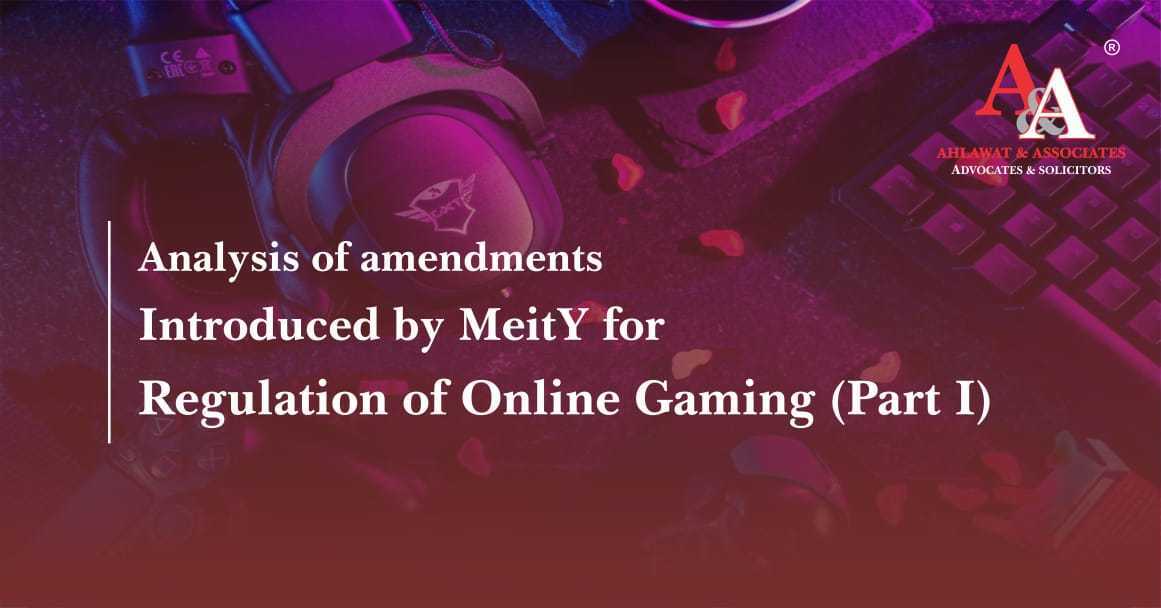
 Tanya Nair , Gaurav Bhalla
Tanya Nair , Gaurav Bhalla
 June 13, 2022
June 13, 2022
The Trademark Act 1999 (“Act”) contains various provisions wherein usage of the terms ‘well-known trademarks’ as well as, ‘mark with reputation’ (under inter alia Sections 11 and 29, respectively). At the first glance, it could seem that these terms are synonymous and could be used interchangeably. This article analyses how these terms have different applicability and effect, and how usage of the terms interchangeably could give rise to interpretational and practical issues.
The pattern of the Indian judicial authorities is also rather surprising in this regard since they have also sometimes used these terms/phrases in a casual manner. There are of course judicial pronouncements wherein the Courts have clearly clarified and distinguished between the two terms in accordance with the intent of the legislation.
The Act provides for a definition of a ‘well-known trademark’ under Section 2(1)(zg) which reads as - “Well-Known Trademark in relation to any goods or services, means a mark which has become so to the substantial segment of the public which uses such goods or receives such services that the use of such mark in relation to other goods or services would be likely to be taken as indicating a connection in the course of trade or rendering of services between those goods or services and a person using the mark in relation to the first-mentioned goods or services.”
In simpler words, well-known trademarks are such marks, the use of which for any goods/services other than the ones that they are generally used for would be construed by a substantial segment of the public as indicating a connection (in terms of origination) between such marks (and the respective goods/services). Some of the marks which have been accorded the status of well-known marks in India include KIT KAT, WHIRLPOOL, CARTIER, PEPSI, etc.
The Trademark Rules, 2017 introduced a provision [under Rule 124(1)] which provides for the process for determination of a well-known trademark - ‘(1) Any person may, on an application in Form TM-M and after payment of fee as mentioned in First schedule, request the Registrar for determination of a trademark as well-known. Such request shall be accompanied by a statement of case along with all the evidence and documents relied by the applicant in support of his claim’.
While the above-mentioned clause provides for the procedure for determination of a mark as ‘well-known’ by the Trade Marks Registry, there lies ambiguity with regards to judicial recognition of a mark as ‘well-known’ and whether it is mandatory to fulfil the statutory requirement under rule 124 despite the mark being declared as well-known by the Indian judiciary. This issue is currently being adjudicated by the Delhi High Court in the matter of Tata Sia Airlines Limited V. Union of India W.P (C) 11642/ 2019, and the final decision in the case is still awaited.
On the other hand, ‘mark of repute’ is at a lower pedestal than a ‘well-known trademark’ and has no statutory mechanism/criterion for declaration of the same. These are marks which have generally gained popularity (over a period of time). The Delhi High Court, on this point, in the case of Bloomberg Finance Lp V. Prafull Saklecha & Ors., CS (OS) No. 2963 of 2012 attempted to provide clarification on the differentiation between ‘well-known marks’ and ‘marks with reputation’, by stating that if a mark is regarded and determined as a “well-known” mark, such determination shall aid with the “reputation” requirement under Section 29(4).
Section 29 of the Act (which provides for infringement of registered trademark) used the term ‘repute’. The provision (in the relevant part) has been extracted below:
‘29. Infringement of registered trade marks—
(4) A registered trade mark is infringed by a person who, not being a registered proprietor or a person using by way of permitted use, uses in the course of trade, a mark which-
Additionally, in Ford Motor Company & Anr. V. CR Borman & Anr CS (OS) 1710/2005, the Delhi High Court, on addressing the objections by the plaintiff under Section 11, stated that the ‘the concept of a well-known trademark does not find a stray or inadvertent mention in Section 29(4) as it pervades several sub-sections of Section 11 of the Act.’
Under the Act, another pertinent distinction provided between the two terms is that well-known trademarks [as provided under Section 11(9)(i) & (ii)] do not require the trademark to be used in India or to be registered. However, the Act, under section 29(4)(c) requires that the ‘registered trademark have a reputation in India’.
Interestingly, the Bombay High Court addressed the issue of the distinction between ‘well-known marks’ and ‘reputed marks’ in the case of RPG Enterprises v Riju Ghoshal and Anr[1]. In this case, Plaintiff became aware of Defendant trading under an identical trademark in October 2017, post which Plaintiff initiated an opposition action against Defendant’s trademark application. Plaintiff contended in the matter that ‘owing to their long-standing goodwill and reputation, extensive and continuous use of the RPG mark, and recognition across different cases of goods and services the said mark (i.e. RPG Enterprises) should be declared a ‘well-known mark’. A defendant under the respective infringement provisions (Section 29(4)), rejected Defendant’s argument and further contended that Defendant was not able to prove that the mark was a mark of reputation. The Court, distinguishing between well-known marks and marks with a reputation, rejected the Defendant’s contention and provided that to ‘establish infringement under section 29(4), there is no requirement that the mark is recorded in the list of well-known trademarks’ and to claim infringement, it is not necessary to satisfy the definition of well-known marks as provided under section 2(zg). The Court surmised its decision on the issue and provided that in order to claim infringement under section 29(4), it is not necessary for a mark to be ‘well-known’ but it is necessary that the mark have a reputation in India. The Court, by distinguishing between ‘well-known’ marks and ‘marks with reputation’ under this matter, has clarified that the two terms are to not be used interchangeably as they fulfil two different purposes under the Act.
It is imperative to note that Section 11 of the Act also provides statutory protection to well-known trademarks. A privilege associated with the status of a ‘well-known trademark’ includes the prevention of registration of the trademark under any class of goods/services. However, on the contrary, ‘marks with reputation’ are only mentioned as a prerequisite for infringement of trademark under Section 29(4)(c).
The confusion between the usage of the two terms is an issue with some judicial authorities using the terms interchangeably and others providing a clear distinction between the two classes of trademarks. To conclude, ‘well-known trademarks’ under Section 11 and ‘marks with reputation’ under Section 29 serve two different purposes, it is only plausible that the two terms be used in accordance with their purpose. Further, more importantly, clarity is required upon the procedure of determination of ‘well-known’ trademarks - if a trademark is declared ‘well-known’ by the Courts of India, should the procedure of applying for the same and paying a fee with the Trademark registry (as provided under Rule 124), be a mandatory requirement? It’ll be interesting to see how the judiciary approaches these issues and provides clarity to trademark right owners and other stakeholders
[1] Notice of Motion No. 1306 of 2019 and Commercial IP Suit No. 769 of 2019.

Discover the impact of the Patent Cooperation Treaty (PCT) on emerging markets, examining both the opportunities it presents and the challenges it poses.
View More
The University Grants Commission (“UGC”) in line with the recommendations of the National Education Policy, 2020, (NEP) initiated
View More
Earlier this year, the Ministry of Electronics and Information Technology ('MeitY') published a draft amendment (on January 2, 2023) to
View More















 Cookies Consent
Cookies ConsentWe use cookies to help you navigate efficiently and perform certain functions. You will find detailed information about all cookies under each consent category below. Read more...
 Cookies Consent
Cookies ConsentWe use cookies to help you navigate efficiently and perform certain functions. You will find detailed information about all cookies under each consent category below. Read more...


Comments
Post A Comment
Your email address will not be published *